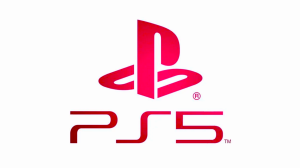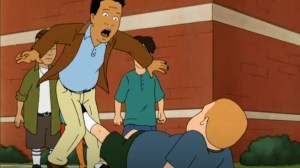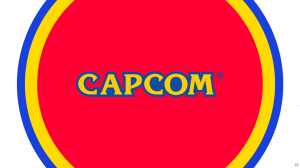
It’s kind of cool to see how some classic games have gone on to inspire some new ones in this generation. We have a feeling that the team over at Matt Makes Games must’ve gone through a handful of challenging NES puzzlers to get its Nintendo Switch game Celeste just right. Likewise, we can see some Legend of Zelda-inspired antics in Onebitbeyond’s somewhat charming The Swords of Ditto.
Videos by ComicBook.com
It doesn’t quite have the perfect content to challenge the almighty Link for the adventure throne, but it’s still got a lot to offer, especially if you’ve been looking for something unique or — most importantly of all — fun.
The game puts you in the shoes of a hero who’s simply known as the “Sword of Ditto,” a destined hero (well, according to a weird dung beetle named Puku, anyway) who must save the world from devastation. Your journey doesn’t exactly get off on the right foot, as your reincarnated hero bites the dust within just a few minutes of play. But never fear — you’re soon reborn shortly thereafter (well, 100 years in game time) and asked to, once again, save the world. But maybe be a little bit more careful, yeah?
After obtaining the sword that dubs you this heroic Ditto, you set out on a number of quests, visiting mini-dungeons and picking up some interesting weapons, including a record disc that acts like a boomerang. You’ll also need to destroy some key parts of this overtaken world before you can challenge the evil Mormo, who was responsible for your previous death. But this is one of those games where you don’t want to rush things.
Prepare For an Interesting Journey — Oh, and Death

That’s because of the terrific leveling-up system that Swords of Ditto possesses. As you fight your way through the game, taking out enemies (some with sword strikes, others with a little ingenuity), you’ll level up and open up new areas, as well as gather enough resources to pick up new items from the local shop. And you can also treat yourself to some food goodies, which serves as a plus when it comes to restoring your energy.
Along the way, you can also level up with Stickers, which act as buffs and give you some great advantages in the heat of combat. These are quite important, as you’ll need some of the best ones you can get your hands on as the later dungeons get increasingly tougher.
Now, one word of warning. You will eventually die in this game, but not due to cheapness — it’s just oddly eventual here. Fortunately, you’re “reborn” 100 years later (as before), and can pick up right where you left off. The only downside is that you’ll lose a lot of your goods, but keep some of your progression. This cycle does grow a little less tiring as the game goes on, so if you have the patience, you’ll eventually persist and see where its true charm lies.
I just wish the side quests were filled with more rewards. While it’s fun to meet up with secondary characters and even pursue a lost penguin or two, the people offering said quests just don’t have the proper rewards that are worth looking for. You might take on one or two out of sheer curiosity; but, honestly, I expected a little more depth in this department.
Good Combat, Great Tunes

But I digress. The game as a whole still has that Zelda-esque charm to it, even if it does get a little bit on the tough side — and forces you to endure death a little more often than you’d like. The dungeon design is innovative and, in some ways, quite sharp, and some of the puzzles can really put you to the test if you’re prepared for it.
Plus, there’s something I really enjoy about the combat. Even if a couple of bosses are on the cheap side, the only reason I ended up perishing earlier than expected was due to my own mistakes. And even then, I learned enough on my next run to make my return to that last mission a little more fulfilling.
I can understand if some players get turned off by a certain lack of progress, or dying too much. Swords of Ditto does ask a lot of its players in that department. But again, I think if you stick with it, you’ll see what Onebitbeyond had in mind for the game. It’s pretty cool.
Plus, I dig the presentation. The music in Swords of Ditto is wonderful, a throwback to the classic adventure game tunes, but with a neat modern twist. The sound effects are pretty good as well, though I could’ve used with a little more variety in how each boss sounds. No biggie, really.
Your Kind of Dungeon Crawler…Perhaps

The graphics have a neat little hand-drawn style to them that can’t be beat. The characters are cute, but never to the point of being cute overkill; the world is beautifully designed and gives you a lot to do, from charming little shops to a fast transport system powered by kazoos (you read that right); and the dungeons, again, provide a challenge that can’t be beat.
Oh, and let’s also talk a bit about the couch co-op. I don’t think I’ve played an adventure game with this kind of support since Legend of Zelda did that whole multiplayer breakout years ago. It’s actually kind of cool, as you can explore more of the map this way while still working together.
While the unavoidable death thing may be hard for some to overlook — not to mention the idea of losing all the cool stuff you built up — Swords of Ditto is still a worthwhile pick. Some balance could’ve gone a long way with some bosses or even a little bit of the progression, but what remains is still a fun little journey that will give Zelda fans a little something to do when you’re not questing in their more beloved games.
Oh, and if you love dungeon crawling, you can consider this your home for a while. We’re talking dungeons for days. Death, too, sure. But dungeons, man…
WWG’s Score: 3.5/5
Disclaimer: A review code was provided by the publisher.









